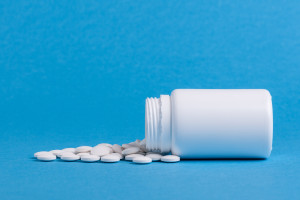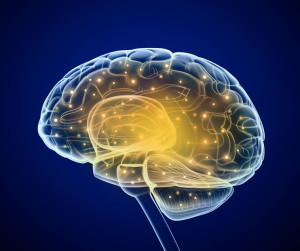 Contributor: Rachael Mattice is the Content Manager for Sovereign Health Group, an addiction, mental health and dual diagnosis treatment provider. Rachael received her bachelor’s degree in journalism and mass communication from Purdue University.
Contributor: Rachael Mattice is the Content Manager for Sovereign Health Group, an addiction, mental health and dual diagnosis treatment provider. Rachael received her bachelor’s degree in journalism and mass communication from Purdue University.
Narcotics (opioids) are addictive painkillers that are legally prescribed and found on the streets in the form of illegal substances such as heroin. Common prescription narcotic painkillers include morphine, codeine, oxycodone, hydrocodone, fentanyl and tramadol. These narcotics are often abused and, as an effect, can cause many people to overdose as well as travel down the dark road to addiction.
The United Nations Office on Drugs and Crime estimated that between 26.4 million and 36 million people abuse opioids worldwide1 . The Substance Abuse and Mental Health Services Administration estimated that 2.1 million people in the United States suffer from substance use disorders related to prescription opioid pain relievers2 .
How Opioids Work
Opioids act by attaching to specific proteins in the body called opioid receptors, which are most commonly found in the brain, spinal cord and the gastrointestinal tract. The mu opioid receptors are the most common type of opioid receptors in the body.
When opioids attach to their receptors, they reduce the perception of pain and can produce a sense of well-being; however, they can also produce drowsiness, respiratory depression, mental confusion, nausea and constipation, all of which are common side effects of opioids.
Mesolimbic Pathway
Opioids produce a sense of well-being and euphoria because they act in a part of the brain known as the mesolimbic pathway, which includes the amygdalae and the nucleus accumbens, also known as the “reward center” of the brain.
 When opioids bind to their receptors in these regions, they produce a large amount of dopamine, which is the primary neurotransmitter released in the reward pathway. Opioids can cause tolerance, dependence and addiction; all three are different from one another.
When opioids bind to their receptors in these regions, they produce a large amount of dopamine, which is the primary neurotransmitter released in the reward pathway. Opioids can cause tolerance, dependence and addiction; all three are different from one another.
Tolerance
When drugs such as opioids are repeatedly used, over time a tolerance will develop. A tolerance is when someone needs a greater amount of a substance to produce the same initial response. The person will need a higher amount of heroin or morphine over time to receive the same euphoric and analgesic effects.
Because the rate of administration is much faster when a drug is snorted or injected, people who snort or inject opioids will develop a quicker tolerance than those who take opioids by mouth as prescribed.
After repeated opioid use, decreased opioid receptor activation occurs, commonly known as desensitization. Down regulation is another way in which tolerance develops when opioids are used over time. Down regulation refers to the decrease in response downstream from the receptors.
Opioid Tolerance
Both of these theories of opioid tolerance are extremely complex and research is still underway to explain the specifics of how desensitization and down regulation of the mu opioid receptors work to cause tolerance to this class of drugs.
Once a patient develops tolerance to a certain opioid, such as tramadol, a clinician might need to increase the dose of that specific opioid medication or switch to a more potent opioid, such as oxycodone, to adequately relieve the patient’s pain.
 This can cause a vicious cycle of increasing the dose of pain medication, which will induce a higher tolerance to that medication and cause the patient to need an even higher dose to relieve pain.
This can cause a vicious cycle of increasing the dose of pain medication, which will induce a higher tolerance to that medication and cause the patient to need an even higher dose to relieve pain.
The most commonly used strategies to prevent opioid tolerance are non-opioid drug therapies, such as anti-seizure medications and antidepressants, and non-drug therapies, such as heat, cold and exercise programs. This approach is the cornerstone of the “opioid-sparing” principle, which aims to minimize opioid doses while optimizing pain relief.
Dependence
Becoming Dependent
Physical dependence is the physiologic change that the body and brain undergo as a result of opioid use over time. A person becomes physically dependent on a drug when he or she exhibits physical withdrawal symptoms in the absence of the drug.
When people become dependent on opioids, they will commonly experience diarrhea, severe muscle aches, abdominal cramping and insomnia when they stop taking the drug.
Many studies have used functional magnetic resonance imaging to show changes in brain structures in people who are dependent on opioids in comparison to people who are not dependent on opioids.
Withdrawal
These imaging studies showed reduced volumes of the amygdalae in the opioid dependent population. A patient who is physically dependent on opioids might sometimes continue to use them to avoid withdrawal, despite pain resolution.
 Opioid dependence is often treated with opioid antagonists such as naltrexone, opioid agonists such as methadone, or a combination of an antagonist and agonist such as a buprenorphine/naltrexone combination. These three medications help patients go through detoxification without having severe withdrawal symptoms. Physical dependence is predictable, easily managed with medication and ultimately resolved with a slow taper off of the opioid.
Opioid dependence is often treated with opioid antagonists such as naltrexone, opioid agonists such as methadone, or a combination of an antagonist and agonist such as a buprenorphine/naltrexone combination. These three medications help patients go through detoxification without having severe withdrawal symptoms. Physical dependence is predictable, easily managed with medication and ultimately resolved with a slow taper off of the opioid.
Addiction
Opioid addiction is characterized by behaviors that encompass genetic, psychosocial and environmental factors that cause a person to continue to use opioids. The behaviors include one or more of the following: impaired control over drug use, compulsive use, continued use despite harm and craving.
Patients can develop physical dependence and tolerance to a drug but not necessarily become addicted. However, most addicted people have already developed tolerance and dependence to that drug.
Uncontrollable cravings are the hallmark of addiction and these cravings cause addicts to go to extreme lengths to get their hands on the drug. This might include illegal and dangerous activity. Addicts often fail to meet social and work obligations, leading to struggles within their personal relationships and financial status.
Risks Increase
 Addicts who inject drugs, such as heroin, are at an increased risk of blood-borne infectious diseases, such as human immunodeficiency virus (HIV) and hepatitis C, and therefore need to undergo addiction treatment as well as medical screening and treatment for these diseases.
Addicts who inject drugs, such as heroin, are at an increased risk of blood-borne infectious diseases, such as human immunodeficiency virus (HIV) and hepatitis C, and therefore need to undergo addiction treatment as well as medical screening and treatment for these diseases.
The National Institute on Drug Abuse stated that injection drug users who do not enter treatment are up to six times more likely to become infected with HIV3 than those who enter and remain in treatment.
Addiction is a complicated disease that requires a wide range of treatments, including cognitive, behavioral and medication therapies.
Community Discussion – Share your thoughts here!
Have you or someone your loved suffered from an addiction to pain medication? What was your first step to recovery? What advice do you have to share?
About the Author:
Rachael Mattice is the Content Manager for Sovereign Health Group, an addiction, mental health and dual diagnosis treatment provider. Rachael is a creative and versatile journalist and digital marketing specialist with an extensive writing and editing background.
Her portfolio includes numerous quality articles on various topics published in print and digital formats at award-winning publications and websites. To learn more about Sovereign Health Group’s mental health treatment programs and read patient reviews, visit http://www.sovhealth.com/. Follow Sovereign Health Group on Twitter, Facebook, Google+ and LinkedIn.
The opinions and views of our guest contributors are shared to provide a broad perspective of addiction. These are not necessarily the views of Addiction Hope, but an effort to offer discussion of various issues by different concerned individuals.
Last Updated & Reviewed By: Jacquelyn Ekern, MS, LPC on May 6th, 2015
Published on AddictionHope.com
